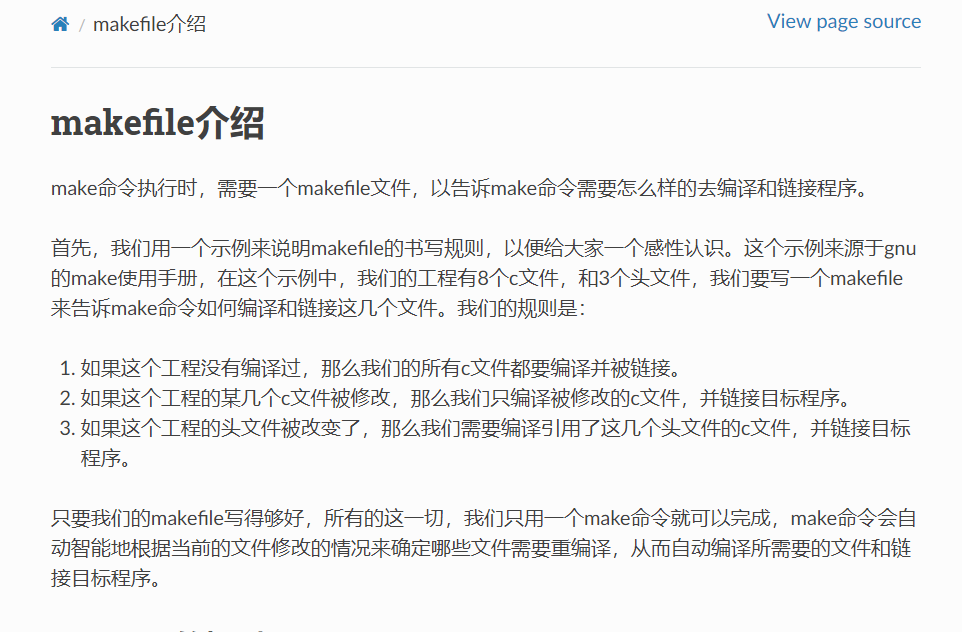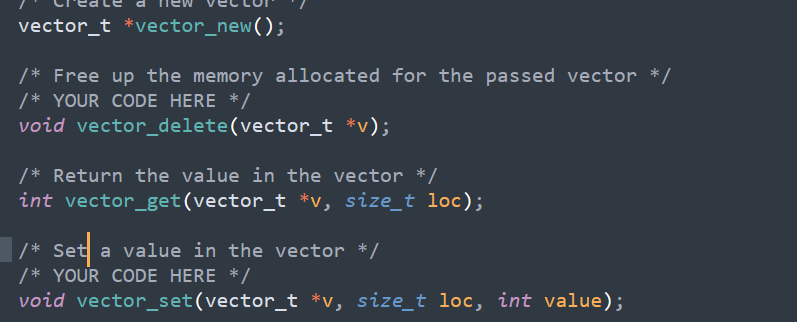cs61c-lab02
Lab 2: Advanced C
cs61c - Great Ideas in Computer Architecture (Machine Structures) lab 笔记第二篇
Exercise 0: Makefiles
makefile教程:https://seisman.github.io/how-to-write-makefile/introduction.html

Exercise 1: Bit Operations
完成get_bit, set_bit, and flip_bit
独立完成后,查看别人的实现学习到了更简洁更直观的表达,就理下别人的思路
1 | |
(x >> n):首先,将整数x向右移动n位,以便将第n位移到最低位,这样我们可以轻松地从最低位提取出这个位的值。(1 & (x >> n)):然后,将移位后的结果与二进制数0b00000001(即1)进行按位与操作。这将保留右移后的结果的最低位,也就是第n位。return (1 & (x >> n));:最后,将上述按位与操作的结果作为函数的返回值,即返回第n位的值(0 或 1)。
1 | |
unsigned mask = ~(1<<n);:首先,创建一个掩码mask,它的目的是将第n位设置为0,其他位都保持不变。这是通过将数字1左移n位然后取反得到的,实际上就是将第n位设置为0,其他位都设置为1。(*x) = ((*x) & mask)|(v << n);:然后,使用掩码和左移操作将指定的位设置为新的值v。(*x) & mask:这个步骤将保留x中除第n位以外的所有位,通过将x和掩码mask进行按位与操作。v << n:将值v左移n位,将要设置的位放置在正确的位置。((*x) & mask) | (v << n):将上述两个步骤的结果进行按位或操作,将保留的部分与设置的位合并,得到最终的结果。
1 | |
(1 << n):首先,将数字1左移n位,生成一个只有第n位为1,其他位为0的数。例如,如果n是3,则1 << 3的结果是二进制数0b00001000。(*x) ^= (1 << n);:然后,将左移后的结果与原始值x进行按位异或操作(^=表示按位异或赋值操作)。按位异或操作的性质是,对于两个操作数的每一位,如果两个操作数的对应位不同,则结果的该位为1,否则为0。因此,这个操作将会翻转x的第n位。
Exercise 2: Linear Feedback Shift Register
很简单的一个东西,由于makefile 设置的原因,不要调用bit_ops.c的函数在lfsr.c中
lfsr倒是蛮有意思
Exercise 3: Memory Management
最开始没想明白两个函数为什么有问题,只是觉得跟之前写的不一样,因为之前结构也要malloc分配空间。
贴上chatgpt的解释
bad_vector_new()
1 | |
它试图返回一个指向局部变量的指针,这会导致悬空指针问题,而且在修改局部变量的成员时也会导致未定义行为。
具体来说,这段代码的问题在于:
vector_t v;:在堆栈上创建了一个局部变量v,它的生命周期仅限于bad_vector_new()函数的执行期间。retval = &v;:将局部变量v的地址赋给了retval,使得retval指向了局部变量v所在的内存地址。retval->size = 1;和retval->data = malloc(sizeof(int));:试图在局部变量v上操作,但由于它是在堆栈上分配的,这会导致未定义行为。这意味着你正在修改一个局部变量的成员,而不是动态分配的内存。return retval;:返回了指向局部变量v的指针retval。
这会导致类似前面提到的问题,当函数 bad_vector_new() 结束时,局部变量 v 将被销毁,但是 retval 仍然指向了该内存地址,从而导致悬空指针。同时,试图在局部变量上进行成员访问也会导致未定义行为。
also_bad_vector_new()
1 | |
它试图返回一个局部变量 v,它在函数结束时将会被销毁,导致悬空指针问题。
具体问题如下:
vector_t v;:在堆栈上创建了一个局部变量v,它的生命周期仅限于also_bad_vector_new()函数的执行期间。v.size = 1;和v.data = malloc(sizeof(int));:在局部变量v上操作,分配了内存并将指针存储在v.data中。由于v是在堆栈上分配的,当函数also_bad_vector_new()结束时,局部变量v将被销毁,导致v.data指向的内存变成了悬空指针。return v;:试图返回局部变量v。
这会导致悬空指针问题,因为在函数结束后,局部变量 v 将被销毁,但是返回的 v 中的指针 v.data 仍然指向了之前分配的内存地址
综上,就是malloc这个应该在heap上调用的函数,不应用到stack上,导致的一系列问题
vector_new()
1 | |
正常思路,给struct 手动分配内存就好
vector_set()
1 | |
注意设0时,别覆盖了之前设置过值就好
makefile test
结果:
1 | |
注意:
- 在 makefile 中为
vector-test目标实施规则。
- 在 vector.h 中添加函数声明

cs61c-lab02
https://2333monster.github.io/2023/08/10/cs61c-lab02/